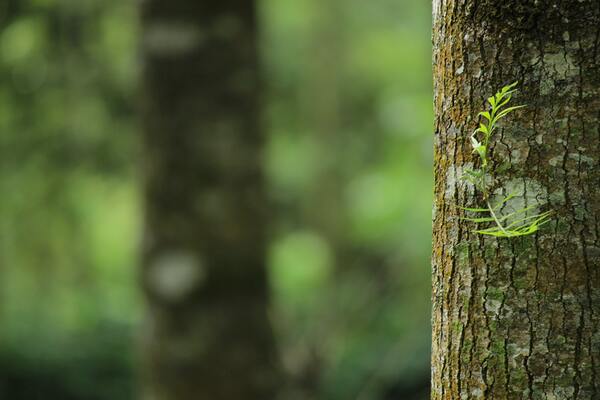
Webworms are small, caterpillar-like insects that are actually the larvae of several species of moths. These worms usually appear in large numbers when their host trees begin to leaf out in the springtime, forming large webs on branches and trunks and feeding on the leaves, buds, and even the bark of their host trees.
They’re destructive pests that can weaken and even kill trees if left untreated, but with a little education and some careful removal methods, you can remove webworms from your trees safely and humanely, restoring the health of your tree while preventing future infestations.
What Are Webworms?
If you’ve recently noticed leaves missing on your trees, you may be dealing with webworms. These pests can feed on many different types of trees, and they make a mess of foliage as they eat. If left untreated, these insects can strip branches bare, which could affect tree health.
If you notice webworms on your trees, don’t worry; there are ways to control these pests and protect your trees from damage. Keep reading for tips on how to remove webworms from trees. Here's how: 1) Knock eggs off plants by hand 2) Spray Btk or other recommended insecticide 3) Watch over your plants for two weeks
It is important to note that steps one and two must be completed quickly because only so much damage can occur at one time. The more eggs that have been laid before control measures have been taken, the greater risk of more severe damage in future weeks or months. Always read labels carefully prior to application. Here's an example: Btk is effective when used within 14 days of leaf spot (depression). Use horticultural oil in May before the egg hatch for suppression applications.
Prevention Tips
To keep webworms from trees at bay, make sure your trees get proper nutrition. Proper nutrition and regular watering go a long way in keeping pests away and providing you with healthy, beautiful trees. Your local garden center will be able to help you select and care for your tree.
You can also spread beneficial nematodes near your tree—the tiny worms are great for eliminating webworm larvae before they have a chance to grow into an infestation. Never use pesticides on plants when growing food; you could risk contaminating your food with harmful chemicals that won’t wash off during preparation or cooking. And don’t forget that handpicking is one of your best defenses against webworms.
If there are already pests on your tree, avoid pesticides by placing sticky tape (sticky side out) around affected areas until all signs of activity have ceased. Remember, always check with professionals first if you think something is wrong with any aspect of your tree! Don't try treating it yourself! Home remedies just aren't as effective as commercial products designed specifically for pest control.
Removing Adult Moths
Although webworm moth larvae don’t usually cause serious damage to their host tree, adult webworm moths can destroy plants and produce loud noises when resting. It’s best not to tolerate adult moths—especially if you have vegetable or fruit trees. You can prevent a pest problem by removing eggs or larvae from trees as soon as possible.
For larger infestations, contact a certified arborist for treatment options that won’t harm your tree or plants. It may also be necessary to remove a large portion of your tree's foliage in order for treatments to be effective; sometimes, it's necessary to remove damaged parts of your tree entirely in order to save it. When you’re determining how to get rid of webworms from trees, remember: check high up on your trees first.
At least 50 percent of an average-sized tree is out of reach—meaning most adult moths are breeding near branches at eye level or higher. However, these areas are especially important because they're what people see first, so starting there will help minimize public concern about whether or not your yard is safe for kids or pets. When weeding out specific species (not all moth pests look alike), use a magnifying glass to confirm their identity before destroying them with pesticides!
Removing Larvae
One of the most effective methods of getting rid of webworms is simply removing them by hand. Because webworm larvae move very little, they’re pretty easy to spot. They can be found on small branches and leaves or hiding in crevices. If you have time, it’s often easier just to remove each larva individually.
To make sure no new larvae are born, spray water at least once a week when there aren’t any adult moths flying around (usually between 6 PM and 4 AM). The spray will help drown out any eggs that might already be on your tree so that there won’t be any hatching after you leave. The best time to kill off eggs is early in the morning—at least two hours before sunrise.
However, if all else fails, spraying every other day for about a month during June/July when egg laying is happening should do the trick.
1. Register your company
2. Create a searchable listing
3. Connect with more clients
